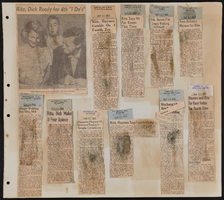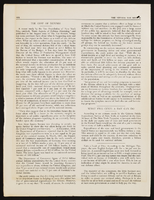Search the Special Collections and Archives Portal
Search Results

Magdalena Martinez oral history interview: transcript
Date
Archival Collection
Description
Oral history interview with Magdalena Martinez conducted by Monserrath Hernandez and Barbara Tabach on April 4, 2019 for the Latinx Voices of Southern Nevada Oral History Project. In this interview, Magdalena Martinez recalls her childhood and growing up in Los Angeles, California. Martinez's parents are from Durango, Mexico, and immigrated to the United States in the 1970s. Martinez describes the generational differences that the women in her family faced and how the feminist movement of the 1970s did not resonate with women of color. Her family moved to Las Vegas in 1986 where she attended Bishop Gorman High School. After transferring to the University of Nevada, Las Vegas (UNLV) from community college and joining a student organization that would later become Student Organization of Latinxs, she became an early member of the Latino Youth Leadership Conference (LYLC) sponsored by the Latin Chamber of Commerce. Martinez describes how the LYLC has evolved over the years, and talks about her role in those changes. She discusses past work for CSN, NSHE, and currently is the Director of Education Programs with the Lincy Institute.
Text
Audio clip from interview with Arthur "Art" Lurie by Cheryle Bacot, April 25, 1986
Date
Archival Collection
Description
Part of an interview with Arthur "Art" Lurie on April 25, 1986. In this clip, Lurie discusses his family, childhood, and moving to Nevada.
Sound
Audio clip from interview with Robert D. "Bob" Fisher by Barbara Tabach, January 8, 2015
Date
Archival Collection
Description
Part of an interview with Robert D. "Bob" Fisher on January 08, 2015. In this clip, Fisher discusses his time in Las Vegas and his involvement with Temple Beth Sholom.
Sound

Accredited Law School Library Minimum Collection and Estimated Start Up Costs report
Date
Archival Collection
Description
Folder contains a report titled "Accredited Law School Library Approved by American Bar Association and Association of American Law Schools: Minimum Collection and Estimated Start Up Costs" prepared for Lilly Fong, University of Nevada Regent, By Katherine Henderson, Clark County Law Library Director. From the University of Nevada, Las Vegas William S. Boyd School of Law Records (UA-00048).
Text

Land transaction
Date
Archival Collection
Description
Text



